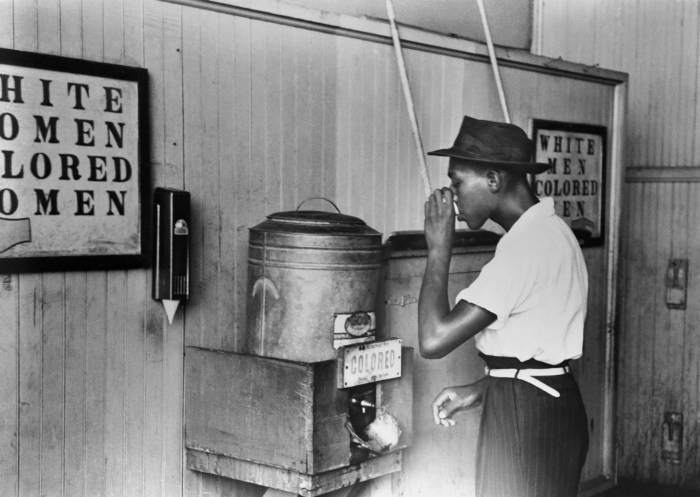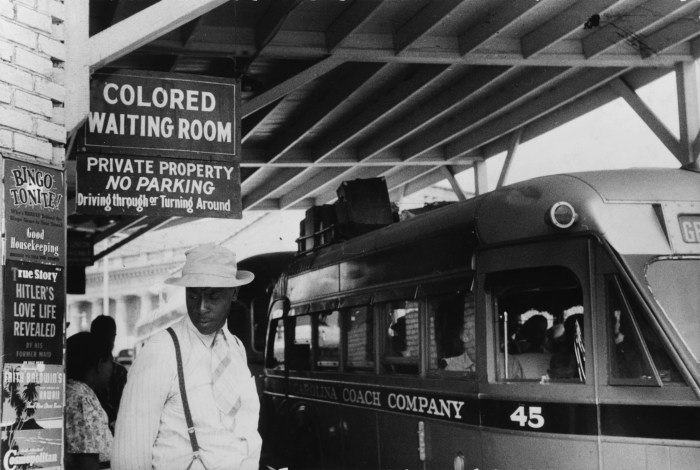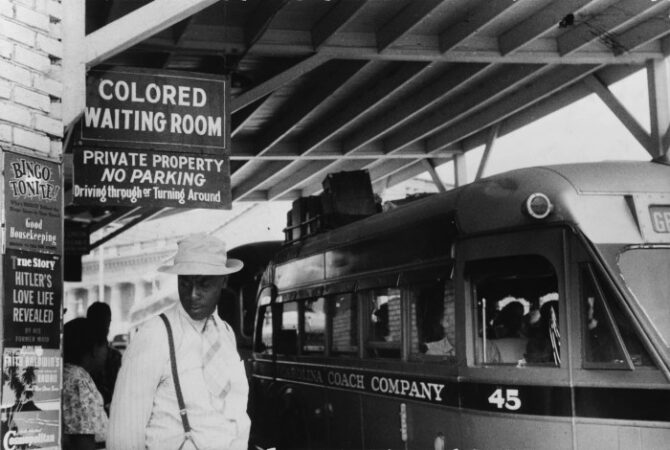
When did Jim Crow laws begin? The answer lies in the complex aftermath of the Civil War and the Reconstruction period. After the abolition of slavery, the South grappled with the question of how to integrate African Americans into society. This period witnessed a rise in white supremacy and the implementation of discriminatory laws aimed at disenfranchising and segregating Black Americans.
The Jim Crow era, named after a popular minstrel show character, was marked by a systematic effort to undermine the rights and freedoms of African Americans. These laws, enacted in the late 19th and early 20th centuries, were rooted in the desire to maintain white dominance and perpetuate racial inequality.
Key Features of Jim Crow Laws: When Did Jim Crow Laws Begin

Jim Crow laws, a system of racial segregation and disenfranchisement, were a defining feature of the American South from the late 19th century to the mid-20th century. These laws, named after a minstrel show character that perpetuated racist stereotypes, aimed to maintain white supremacy and limit the civil rights of African Americans. The Jim Crow era witnessed the rise of systematic discrimination in various aspects of life, including voting, education, employment, and public spaces.
Voting Restrictions
The disenfranchisement of African Americans was a central element of Jim Crow. States enacted a range of laws designed to prevent Black people from registering to vote or casting ballots. These restrictions included:
- Literacy Tests: These tests, often administered subjectively, required voters to demonstrate reading and writing skills, effectively disenfranchising many African Americans who had limited access to education due to segregation.
- Poll Taxes: These taxes, which had to be paid before voting, were a financial burden on many Black people, especially those who were often employed in low-paying jobs.
- Grandfather Clauses: These clauses exempted individuals whose ancestors had been eligible to vote before 1867 from literacy tests and poll taxes, effectively excluding most African Americans.
- White Primaries: These primaries, common in the South, allowed only white voters to participate in the Democratic Party primaries, effectively denying African Americans a voice in selecting candidates.
Segregation
Jim Crow laws enforced the separation of Black and white people in virtually every aspect of public life. This segregation was codified in “separate but equal” laws, which claimed to provide equal facilities for both races while maintaining their physical separation.
- Public Facilities: Segregation extended to public transportation, restaurants, restrooms, schools, parks, libraries, hospitals, and other public spaces. Separate and often unequal facilities were provided for Black people, highlighting the inherent inequality of the system.
- Education: Public schools were segregated, with Black schools often receiving significantly less funding, resources, and qualified teachers compared to white schools. This disparity had a profound impact on the educational opportunities and outcomes of Black children.
- Housing: Jim Crow laws often restricted where Black people could live, leading to the development of segregated neighborhoods and the creation of racially restrictive covenants that prohibited Black families from buying or renting homes in white areas.
Economic Disenfranchisement, When did jim crow laws begin
Jim Crow laws also contributed to the economic marginalization of African Americans. These laws limited opportunities for Black people in employment, housing, and access to credit, perpetuating a cycle of poverty.
- Employment: Black people were often relegated to low-paying jobs, denied promotions, and excluded from certain industries, particularly those considered “white collar” or skilled labor.
- Housing: Segregated housing patterns and restrictive covenants limited access to quality housing, often forcing Black families into substandard and overcrowded conditions.
- Credit: Black people faced discrimination in access to loans and credit, making it difficult to start businesses, purchase homes, or invest in their future.
Examples of Jim Crow Laws
Jim Crow laws varied across states, but some common examples include:
- Mississippi’s 1890 Constitution: This document included provisions that disfranchised Black voters through literacy tests, poll taxes, and grandfather clauses.
- Louisiana’s “Separate Car Act” (1890): This law required the segregation of Black and white passengers on trains, setting a precedent for other forms of segregation.
- Alabama’s “Anti-Miscegenation Laws”: These laws prohibited interracial marriage, reflecting the racist ideology that underpinned Jim Crow.
Concluding Remarks

The legacy of Jim Crow continues to cast a long shadow on American society. While the laws themselves have been dismantled, the deep-seated prejudice and discrimination they fostered persist. The impact of Jim Crow can be seen in the persistent racial disparities in education, healthcare, employment, and criminal justice. Understanding the origins and consequences of Jim Crow is crucial to confronting the ongoing challenges of racial inequality in the United States.
Frequently Asked Questions
What was the Compromise of 1877?
The Compromise of 1877 ended Reconstruction and effectively returned control of the South to white Democrats. In exchange for the election of Rutherford B. Hayes as President, federal troops were withdrawn from the South, marking the end of Reconstruction and paving the way for the rise of Jim Crow laws.
What was the “separate but equal” doctrine?
The “separate but equal” doctrine, established in the Supreme Court case Plessy v. Ferguson (1896), legalized segregation in public facilities. This doctrine, despite its claim of equality, justified the creation of separate and unequal facilities for Black Americans, further entrenching segregation.
How did Jim Crow laws impact voting rights?
Jim Crow laws severely restricted the voting rights of African Americans through various tactics, including literacy tests, poll taxes, and grandfather clauses. These measures effectively disfranchised Black voters and prevented them from participating in the political process.
What was the significance of Brown v. Board of Education?
The landmark Supreme Court case Brown v. Board of Education (1954) overturned the “separate but equal” doctrine, declaring segregation in public schools unconstitutional. This decision marked a major victory in the Civil Rights Movement and helped pave the way for the dismantling of Jim Crow laws.





